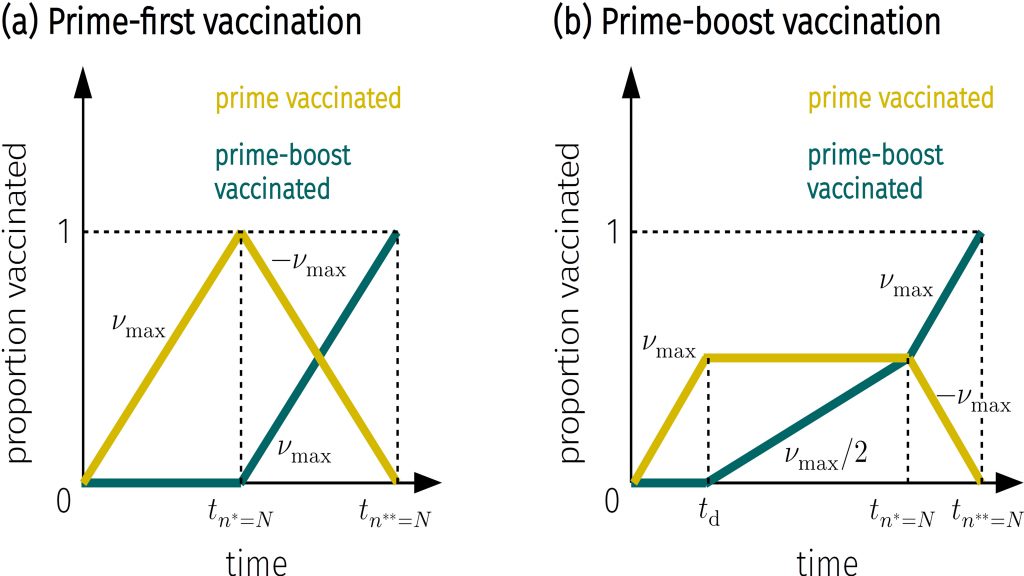From the Journal: Chaos
WASHINGTON, October 19, 2021 — In many parts of the world, the supply of COVID-19 vaccines continues to lag behind the demand. While most vaccines are designed as a two-dose regimen, some countries, like Canada, have prioritized vaccinating as many people as possible with a single dose before giving out an additional dose.
In Chaos, by AIP Publishing, researchers from the Frankfurt School of Finance and Management and the University of California, Los Angeles illustrate the conditions under which a “prime first” vaccine campaign is most effective at stopping the spread of the COVID-19 virus.

The prime first campaign does not suggest people should receive only one dose of the vaccine. Instead, it emphasizes vaccinating large numbers of people as quickly as possible, then doubling back to give out second doses. In comparison, the “prime boost” vaccine campaign prioritizes fully vaccinating fewer people.
Immunologically speaking, the prime boost scenario is always superior. However, under supply constraints, the advantages of vaccinating twice as many people may outweigh the advantages of a double dose.
The scientists simulated the transmission of COVID-19 with a susceptible, exposed, infected, recovered, deceased model. Each of these disease states is associated with a compartment containing individual people. Transitions between compartments depend on disease parameters like virus transmissibility.
Each compartment is further divided to account for unvaccinated, partially vaccinated, and fully vaccinated individuals. The researchers measured how each vaccine group compared to the others under different conditions.
“We have this giant degree of uncertainty about the parameters of COVID-19,” said author Jan Nagler. “We acknowledge that we don’t know these precise values, so we sample over the entire parameter space. We give a nice idea of when prime first campaigns are better with respect to saving lives than prime boost vaccination.”
The team found the vaccine waning rate to be a critically important factor in the decision. If the waning, or decrease in vaccine effectiveness, is too strong after a single dose, the double dose vaccination strategy is often the better option.
However, the vaccine strategy flips if the waning rate after a single dose is more like the waning rate after a double dose.
“Our results suggest that better estimates of immunity waning rates are important to decide if prime first protocols are more effective than prime boost vaccination,” said author Lucas Böttcher.
As the scientific community gathers more data on COVID-19 vaccinations, the scientists hope this model will become more informative for public health experts and politicians who must decide for or against a certain vaccination protocol.
###
For more information:
Larry Frum
media@aip.org
301-209-3090
Article Title
Decisive conditions for strategic vaccination against SARS-CoV-2
Authors
Lucas Böttcher and Jan Nagler
Author Affiliations
Frankfurt School of Finance & Management, University of California, Los Angeles
